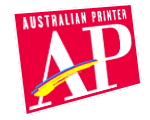One of the biggest arguments for digital print over its offset equivalents is that digital print can be produced on demand in exceedingly short runs. This saves waste and improves the economics of what makes for cost effective printing.
With a fleet of distributed digital presses we can print short runs close to the point of use, for instance documents bespoke to a specific postal code. We have less inventory and transport emissions and for environment impact reduction it makes inestimable sense: none of the waste, chemicals or lengthy makeready of conventional offset.
However that position may not be as robust as digital press manufacturers would have the markets believe. In response to market pressure, mostly fuelled by advances in digital printing, offset press technology has advanced to improve the run length economics. Heidelberg’s Anicolor technology is a case in point.
Anicolor is a zoneless inking unit technology that essentially manages inking, so that makeready time on press is shorter and waste is cut. This means that customers with Heidelberg SM 52 or XL 75 presses and digital presses have more flexibility in how they manage their work across machines. There are over 250 printing companies worldwide using the Anicolor technology, and Heidelberg says that the overall waste reduction is an astonishing 90%. Customers are also seeing a 50% reduction in makeready times because the press is coming up to colour more quickly. This will also have a knock on effect on the energy required to print shorter runs.
Technologies of this kind are good news for printers who want to reduce their environmental impact. They are also good news for companies working with digital and offset devices: an offset press optimised for short runs provides a complement to digital and may be more cost effective, especially for short run static data jobs.
The environmental impact of print continues to go down with developments such as Anicolor. Making printing technology more effective by developing tools to reduce waste or energy usage are what this industry has been doing for years. Mostly it’s been done in order to cut costs, but the added benefit has been a reduced carbon footprint which can be measured and quantified. Not many industrial sectors, if any, have advanced so far as print in this respect: accountable, measurable and uniquely sustainable. Technology advances can only strengthen the argument.
Verdigris is supported by: Agfa Graphics (www.agfa.com), Digital Dots (www.digitaldots.org), drupa (www.drupa.com), EFI (www.efi.com), EcoPrint (www.ecoprintshow.com), Fespa (www.fespa.com), Heidelberg (www.uk.heidelberg.com), HP (www.hp.com), Kodak (www.kodak.com/go/sustainability), Pragati Offset (www.pragati.com), Ricoh (www.ricoh.com), Unity Publishing (unity-publishing.co.uk), Xeikon (www.xeikon.com) – and the Printer Magazines Group (i-grafix.com).







